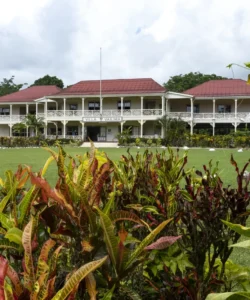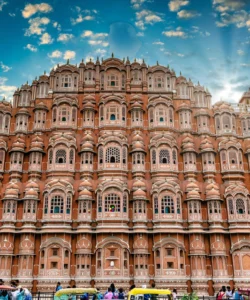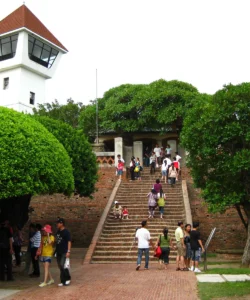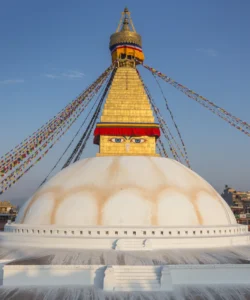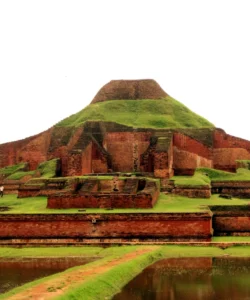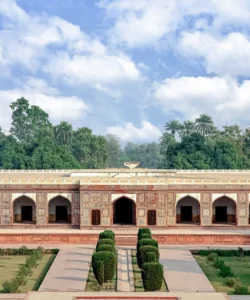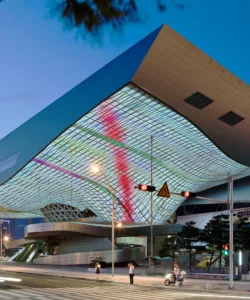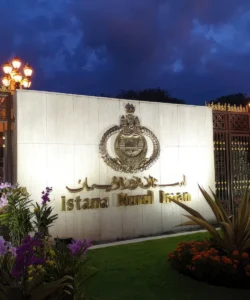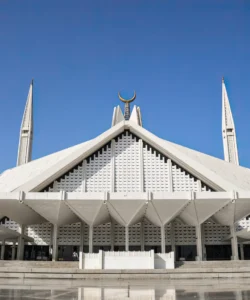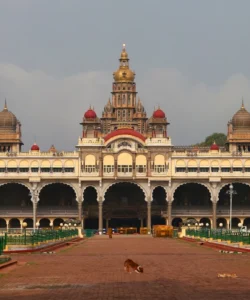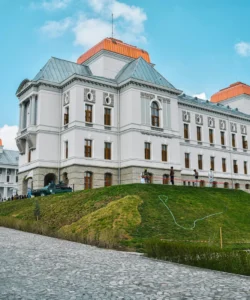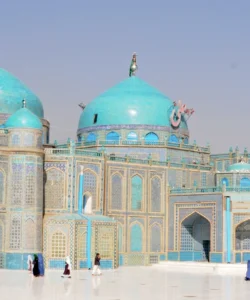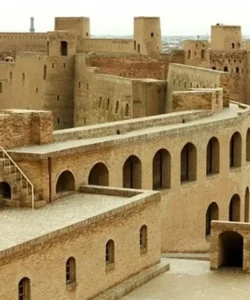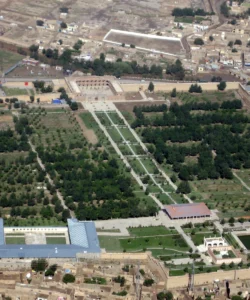Darul Aman Palace (Dari: قصر دارالامان; Pashto: د دارالامان ماڼۍ, meaning “Abode of Peace”) is a magnificent, neoclassical palace located in Kabul, Afghanistan. Built in the 1920s as a symbol of modern and progressive Afghanistan, it has become an enduring testament to the country’s tumultuous history, its resilience, and a powerful symbol of hope for the future.
Name: Darul Aman Palace (also spelled Darulaman Palace)
Address: The palace is located on a hilltop in the Darulaman district, approximately 8-16 kilometers (5-10 miles) southwest of the center of Kabul, Afghanistan. It stands near the National Museum of Afghanistan and the Afghan Parliament building.
How to Get There:
Travel to Kabul and Darul Aman Palace is currently extremely difficult and unsafe for general tourism due to the political instability and security situation in Afghanistan. The following information is for historical context and is not a recommendation for travel.
- By Air: The closest airport is Hamid Karzai International Airport (KBL) in Kabul. Prior to recent events, a taxi or private vehicle from the airport to the palace would take approximately 30-45 minutes.
- By Road: The palace is located on Darul Aman Road and is accessible from various parts of Kabul. In more stable times, taxis and private cars were the most common modes of transport.
- By Foot: While the palace is located on a hilltop and not within easy walking distance from the city center, a walk from the nearby National Museum would be possible.
- Entrance Fee: Prior to recent events, there was an entrance fee for the palace, and visitor access could be restricted due to security concerns.
- Best Time to Visit: The cooler, dry months (September to May) are ideal. The palace and its surrounding gardens are a popular spot for locals on weekends and public holidays.
Landscape and Architecture:
Darul Aman Palace is a striking example of European neoclassical architecture, set within a vast, now-restored landscape that has witnessed a century of dramatic events.
- Neoclassical Architecture: The palace, designed by German and French architects, is a three-story, U-shaped building constructed with brick and concrete. Its architecture is distinctly European neoclassical, characterized by its symmetrical façade, rows of Corinthian columns, and a grand semi-circular main hall. It was one of the first buildings in Afghanistan to feature central heating and running water.
- Hilltop Location: The palace is strategically perched on a hill, providing it with a prominent position and commanding panoramic views of the surrounding flat valley and the Darulaman district.
- “Modern” Capital Dream: It was originally intended to be the centerpiece of a new, modern capital city called Darulaman, connected to Kabul by a narrow-gauge railway. However, this ambitious vision was abandoned when King Amanullah Khan was forced to abdicate.
- A Symbol of War and Resilience: The palace’s architecture bears the scars of decades of conflict. It was gutted by fire in 1968, damaged by a coup attempt in 1990, and severely shelled during the civil war of the 1990s, leaving it a bullet-riddled ruin. For decades, its crumbling walls and collapsed ceilings stood as a haunting reminder of the country’s turbulent past.
- Recent Restoration: A large-scale, all-Afghan restoration project was launched in 2016 and completed in 2019, costing over $16 million. The palace was meticulously rebuilt to its former glory, using local materials like marble from Herat and wood from Kunar. This restoration, a powerful symbol of national pride, has transformed the palace from a ruin into a modern historical and cultural venue.
- Integrated Complex: The palace is part of a larger complex that includes the new Afghan Parliament building and the National Museum of Afghanistan, forming a cultural and historical hub in the district.
- Green Gardens: The palace is set amidst green surroundings, which have also been restored and landscaped, providing a pristine and peaceful environment for visitors.
What Makes It Famous:
- Symbol of Resilience: Darul Aman Palace is globally famous as a powerful symbol of Afghan resilience and a testament to the nation’s unwavering spirit and determination to rebuild. Its transformation from a war-torn ruin to a beautifully restored monument is a central part of its fame.
- King Amanullah Khan’s Vision of Modernity: The palace was a physical representation of King Amanullah Khan’s ambitious but ultimately unfulfilled dream of a modern, progressive, and independent Afghanistan in the early 20th century.
- Neoclassical Masterpiece: It is considered a neoclassical masterpiece and one of the finest examples of European architectural style in Afghanistan, a unique cultural blend that reflects the country’s historical ties with Europe.
- Historical Significance: The palace has served as a government building, a medical school, and a military headquarters, and has witnessed a century of pivotal moments in Afghan history, from a royal project to a symbol of conflict.
- Historical and National Pride: The restoration project, funded entirely by the Afghan government and carried out by Afghan workers, has made the palace a source of immense national pride, symbolizing a “return to the past to begin laying the foundation for the future.”
- Prominent Landmark: Its prominent hilltop location and grand architecture make it one of Kabul’s most recognizable landmarks.
Differences from Some Other Wonders:
- Reborn from Conflict: The most significant difference from other historical palaces is its modern history of destruction and restoration. Unlike the Lahore Fort or Red Fort, which have been continuously occupied for centuries, Darul Aman’s story is one of being repeatedly destroyed in war and then meticulously rebuilt, making the narrative of conflict and resurrection its defining characteristic.
- Symbol of “Abandoned Dreams”: Its fame is deeply intertwined with its historical identity as the centerpiece of a new capital that was never fully realized, earning it the poignant title, “the palace of abandoned dreams,” which adds a layer of unfulfilled ambition to its history.
- European Neoclassical vs. Traditional Islamic/Regional Styles: While other palaces in the region (e.g., Lahore Fort, Mysuru Palace) are famous for their fusion of Islamic/Mughal and indigenous styles, Darul Aman Palace is a distinct example of European neoclassical architecture brought to Afghanistan by a reformist king, making its architectural style unique.
- Modern vs. Ancient: Unlike ancient wonders like the Archaeological Remains of the Bamiyan Valley or the Citadel of Herat (which have millennia of history), Darul Aman Palace is a relatively modern building (completed in 1927) whose story is rooted in the 20th and 21st centuries.
- A Poignant Memorial: While it has been restored, for a long time, it stood as a haunting, bullet-riddled memorial to the country’s civil war. This very recent memory of conflict gives it a raw, emotional dimension that other ancient sites may not have.
- All-Afghan Restoration: The fact that the restoration project was exclusively funded and executed by Afghans, using Afghan materials, highlights a unique story of national self-reliance and pride.
Darul Aman Palace in Kabul Photos:
































